World Record: Scientists from Northern Germany Produce the Lightest Material in the World
A network of porous carbon tubes that is three-dimensionally interwoven at nano and micro level – this is the lightest material in the world. It weights only 0.2 milligrams per cubic centimetre, and is therefore 75 times lighter than Styrofoam, but it is very strong nevertheless. Scientists of Kiel University (KU) and Hamburg University of Technology (TUHH) have named their joint creation “Aerographite”.
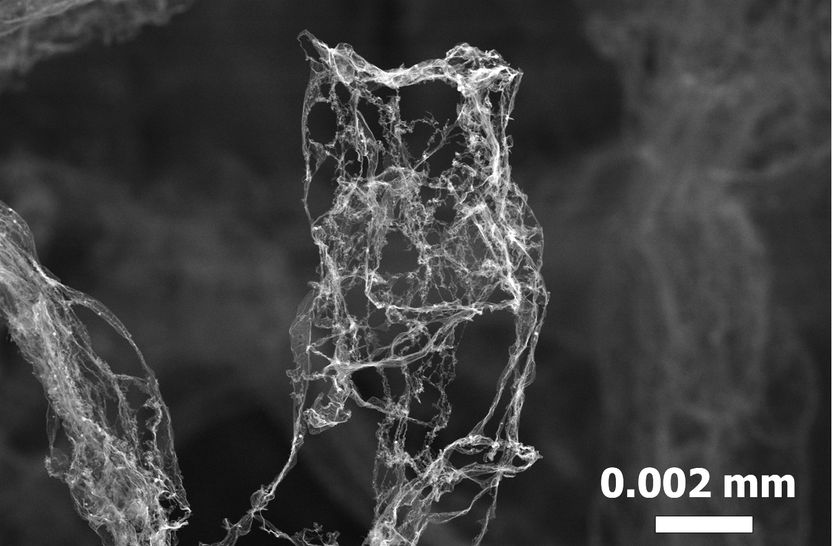
This graphic shows a detail of the world’s lightest material: Aerographite. Open carbon tubes form a fine mesh and offer a low density of 0.2 milligram per cubic centimetre. The picture was taken with a scanning electron microscope (TEM).
TUHH
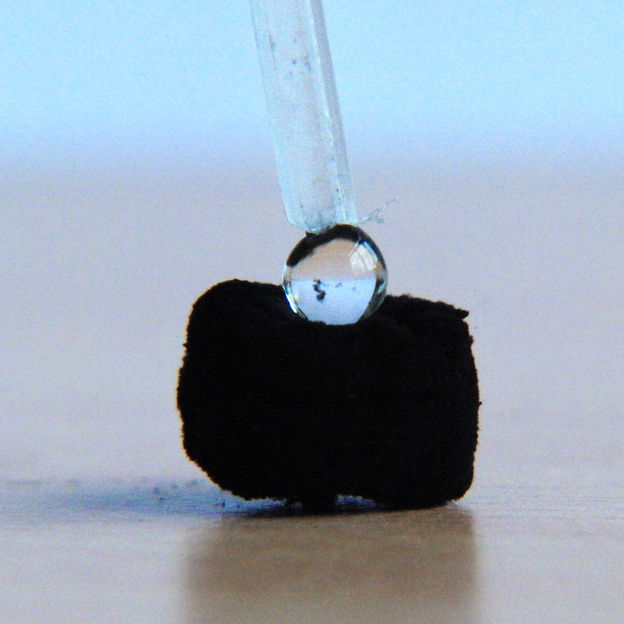
Aerographite is water-repellent, jet-black (which is currently analysed) and electrically conductive.
KU
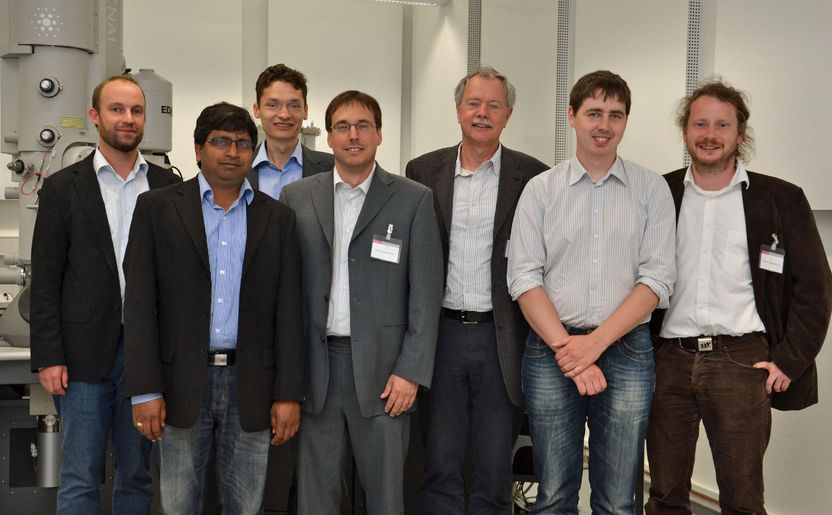
The proud authors of the Advanced Materials article (from left): Matthias Mecklenburg, Yogendra Kumar Mishra, Arnim Schurchardt, Lorenz Kienle, Karl Schulte, Sören Kaps, Rainer Adelung. (not at the picture: co-author Andriy Lotnyk). Photo: Claudia Eulitz
CAU
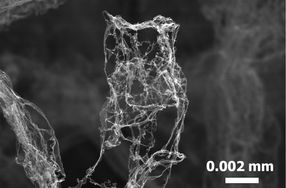
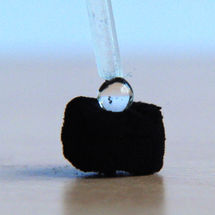
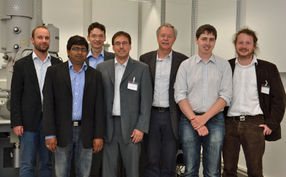
The properties
It is jet-black, remains stable, is electrically conductive, ductile and non-transparent. With these unique properties and its very low density the carbon-made material “Aerographite“ clearly outperformes all similar materials. „Our work is causing great discussions in the scientific community. Aerographite weights four times less than world-record-holder up to now”, says Matthias Mecklenburg, co-author and Ph.D. student at the TUHH. The hitherto lightest material of the world, a nickel material that was presented to the public about six months ago, is also constructed of tiny tubes. Only, nickel has a higher atomic mass than carbon. “Also, we are able to produce tubes with porous walls. That makes them extremely light”, adds Arnim Schuchard, co-author and Ph.D. student at Kiel University. Professor Lorenz Kienle and Dr. Andriy Lotnyk were able to decode the material’s atomic structure with the aid of a transmission electron microscope (TEM).
Despite of its low weight Aerographite is highly resilient. While lightweight materials normally withstand compression but not tension, Aerographite features both: an excellent compression and tension load. It is able to be compressed up to 95 percent and be pulled back to its original form without any damage, says professor Rainer Adelung of Kiel University. “Up to a certain point the Aerographite will become even more solid and therefore stronger than before”, he points out. Other materials become weaker and less stable when exposed to such stress. “Also, the newly constructed material absorbs light rays almost completely. One could say it creates the blackest black”, acknowledges Hamburg’s Professor Karl Schulte.
The construction
“Think of the Aerographite as an ivy-web, which winds itself around a tree. And than take away the tree”, Adelung describes the construction process. The “tree” is a so-called sacrificial template, a means to an end. The Kiel-team, consisting of Arnim Schuchardt, Rainer Adelung, Yogendra Mishra and Sören Kaps, used a zinc oxide in powder form. By heating this up to 900 degrees Celsius, it was transformed into a crystalline form.
From this material, the scientists from Kiel made a kind of pill. In it, the zinc-oxide formed micro and nano structues, so called tetrapods. These interweave and construct a stable entity of particles that form the porous pill. In that way, the tetrapods produce the network that is the basis for Aerographite.
In a next step, the pill is positioned into the reactor for chemical vapour deposition at TUHH and heated up to 760 degrees Celsius. “In a streaming gas atmosphere that is enriched with carbon, the zinc oxide is being equipped with a graphite coating of only a few atomic layers. This forms the tanged-web structures of the Aerographite. Simultaneously, hydrogen is introduced. It reacts with the oxygen in the zinc oxide and results in the emission of steam and zinc gas”, continues Schulte. The remains are the characteristic interwoven, tube-like carbon structure. TUHH-scientist Mecklenburg: “The faster we get the zinc out, the more porous the tube’s walls get and the lighter is the material. There is considerable scope.” Schuchard adds: “The great thing is that we are able to affect the characteristics of the Aerographite; the template form and the separation process are constantly being adjusted in Kiel and Hamburg.”
The application
Due to its unique material characteristics, Aerographite could fit onto the electrodes of Li-ion batteries. In that case, only a minimal amount of battery electrolyte would be necessary, which then would lead to an important reduction in the battery’s weight. This purpose was sketched by the authors in a recently published article. Areas of application for these small batteries might be electronic cars or e-bikes. Thus, the material contributes to the development of green means of transportation.
According to the scientists, further areas of application could be the electrical conductivity of synthetic materials. Non-conductive plastic could be transformed, without causing it to gain weight. Statics, which occur to most people daily, could hence be avoided.
The number of further possible areas of application for the lightest material in the world is limitless. After officially acknowledging Aerographite, scientists of various research areas were bursting with ideas. One possibility might be the use in electronics for aviation and satellites because they have to endure high amounts of vibration. Also, the material might be a promising aid in water purification. It might act as an adsorbent for persistent water pollutants for it could oxidise or decompose and remove these. Here, scientists would benefit from Aerographite’s advantages namely mechanical stability, electronic conductivity and a large surface. Another possibility might be the purification of ambient air for incubators or ventilation.




























































